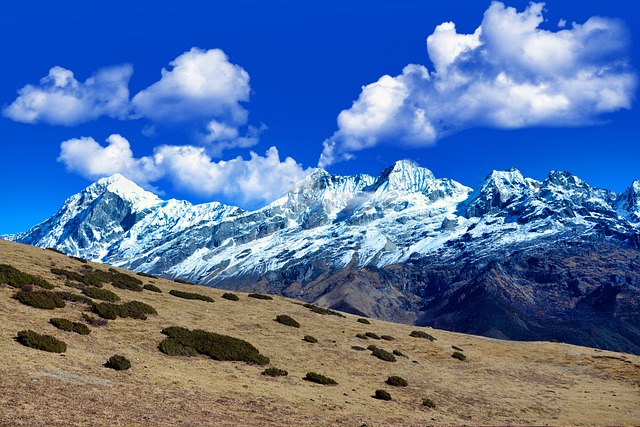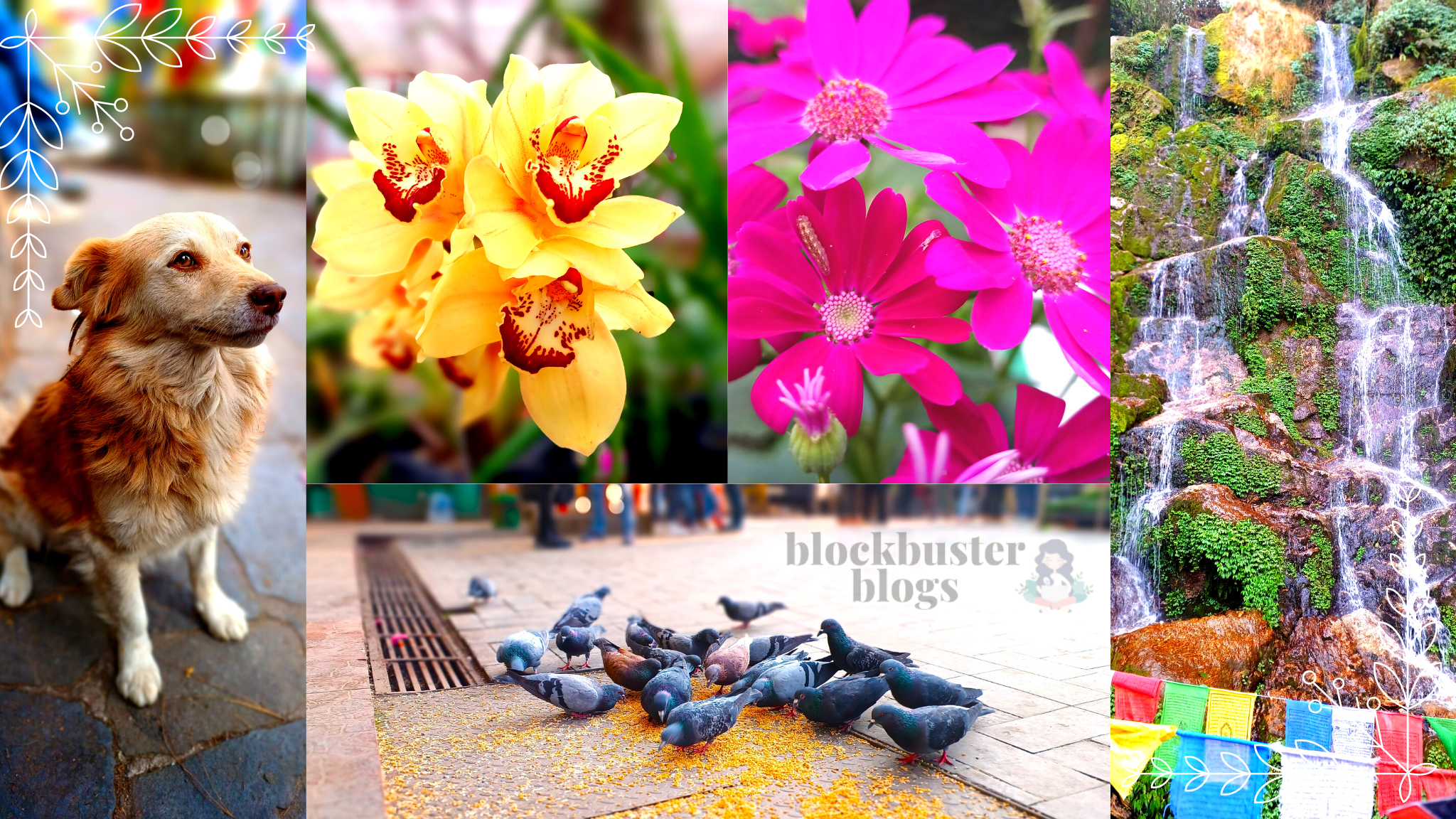Sikkim is small but a magnificent state in northeastern India, situated in the Himalayan mountain range. The state is surrounded by west Bengal to the south and two neighboring countries Bhutan and Nepal to the east and west respectively.
Sikkim’s capital and largest city is Gangtok.
The state has a diverse population, with ethnic groups such as the Bhutia, Lepcha, and Nepali living together in harmony. The official languages are English, Nepali, and Sikkimese.
It is a beautiful, diverse, and culturally rich state that is full of different traditions, which are heavily influenced by Tibetan Buddhism. For those who want to explore the Himalayas’ natural splendor or discover more about northeastern India’s culture and history, the state is definitely worth a trip.
The state has a unique political history, as it was an independent kingdom founded by the Namgyal dynasty from the 17th century until 1975. It became the 22nd state of India in 1975 after a popular referendum.
Natural Beauty
The spectacular beauty of Sikkim can blow your mind. The view of the painted curved road and the calm blue river Teesta flowing beside it is mesmerizing. There are many large pieces of rock on the side of the river that cling to the river and enhanced its beauty. The narrow path between the high lush green hills looks amazing. If you are lucky enough then you can witness the magic of snowfall too in the winter season. It is impossible to express in words how strange the sight of the mountains covered with snow is like a sheet of white velvet.
Sikkim is also famous for its biodiversity. Yaks are the main attraction of sikkim as well as here Himalayan black bears, mountain dogs, snow leopards, and red pandas are available .
The state has several numerous lakes, and glaciers, national parks, wildlife sanctuaries as well as a few stunning waterfalls that are a must-visit for all. Khangchendzonga National Park is included in the UNESCO World Heritage List.
Economy
The main crops grown in Sikkim are wheat, paddy, maize, barley, buck wheat, potatoes, tea, etc which dominate the state’s agricultural economy. The state is famous for its horticulture, especially its production of oranges, apples, and Large cardamom (Amomum Subulatum Roxb).
But tourism is a significant revenue generator and main identification for this state. Visitors are drawn to the state’s natural beauty, which includes the Kanchenjunga Mountain range, which is the third highest peak in the world, and the hot springs at Phurchachu and Yumthang, making tourism a significant source of income for the region.
Sights & Attractions
- Gangtok: The capital city of Sikkim, known for its picturesque views and Buddhist monasteries.
- Nathula Pass: A high mountain pass in the Himalayas, offering mind-blowing views of the surrounding peaks.
- Tsomgo Lake: A glacial lake located at an altitude of 12,400 feet, known for its serene setting and beautiful surroundings.
- Pelling: A small town in western Sikkim, known for its stunning views of Mount Kanchenjunga and its proximity to several Buddhist monasteries.
- Rumtek Monastery: One of the most visited and important Tibetan Buddhist monasteries in the world, located near Gangtok.
- Yumthang Valley: A beautiful valley known for its hot springs and colorful Rhododendron flowers.
- Kanchenjunga National Park: A biodiversity hotspot in Sikkim, home to several endangered species and beautiful trekking routes.
- Lachung: A beautiful village located in North Sikkim known for its scenic views, waterfall and hot spring.
- Lachen: Lachen is a locality in the Indian state of Sikkim’s Mangan District.
- Char Dham: The stunning Char Dham temple is situated in Namchi, South Sikkim, featuring a giant statue of Lord Shiva and is surrounded by gorgeous mountains.
- Gurudongmar Lake: Gurudongmar Lake of Sikkim, India is one of the highest lakes in the world and It is situated in the lap of Great Himalaya’s Mangan District of the Indian state of Sikkim.
- Zero Point: This is the last civilian location before the Chinese border that offers scenic beauty panoramas from a height of 15,300 feet.
- Lachen: Lachen is a locality in the Indian state of Sikkim’s Mangan District.
- Ravangla: Ravangla is famous for the large Gautama Buddha statue in Buddha Park.
- Chenrezig statue and skywalk: The place is famous for a 137 ft (42 m) tall statue of the bodhisattva Chenrezig, the tallest Chenrezig statue in the world and the glass-bottomed skywalk.
It would be advisable to verify with local officials or travel agencies before planning a trip because the area has restrictions on visitor numbers, stay time, and some areas require an inner line permit.
Weather
Due to its topography and location Sikkim has a diverse climate. The state has three main seasons: summer, monsoon, and winter.
Summer: Sikkim is cold most of the time. The majority of Sikkim’s inhabited areas have a temperate climate, with summertime highs rarely topping 28 °C (82 °F). The region of Sikkim experiences a typical temperature of about 18 °C (64 °F).
Monsoon: The months of July to September are the monsoon season in Sikkim, during which the state receives heavy rainfall. The monsoon can cause landslides and road closures in hilly areas, making travel difficult.
Winter: The winter of Sikkim is chilling and charming. October to March is the winter months that are perfect for a memorable trip to Sikkim. During this time few frozen lakes and snowfall can be spotted in a few locations because that time the temperature drops below freezing in higher elevations, especially in the north. The lower regions have milder winters than the higher regions, about 10 °C (50 °F).
It should be remembered that Sikkim’s climate changes with altitude and the temperature can be different for every place depending on it. So before planning for any trip, it is usually prudent to check the weather especially if you intend to go to a high altitude.
Culture
Buddhism is the primary and vital culture of Sikkim and the majority of the people are follows this religion. Monasteries and temples play a significant role in the culture. Traditional Buddhist festivals and ceremonies are observed all year long.
The main population of Sikkim is made up of ethnic Nepalis who are of Bhutia, Lepcha, and Limbu origin. The Bhutias are of Tibetan origin, the Lepchas are the original inhabitants of Sikkim, and the Limbus are also of Tibetan origin. This diversity of ethnic groups has led to a unique blend of cultures in Sikkim.
The Sikkimese people have a rich tradition of music and dance, which reflects the state’s vibrant and colorful culture. The traditional music of Sikkim is played on instruments such as the dramyin, madal, and kongchen. The traditional dances of Sikkim are usually performed during festivals and ceremonies, and they are a visual treat to watch. The Sikkimese people are known for their warmth and hospitality, and visitors are greeted with great friendliness.
The traditional cuisine of Sikkim is Influenced by its ethnic groups and the variation of delicious food from different parts of India along with its neighboring states’ cuisines like Chinese, Tibetan, Bhutanese, and Nepalese.
All these cultures, customs, and traditions make Sikkim a unique and interesting place to visit. It is an ideal place for mount lovers or anyone who wants to explore the beauty of nature and have the best experience for a lifetime to get a glimpse of the ancient culture that is slowly disappearing in the rest of the world.
Population
The population of Sikkim is primarily made up of ethnic Nepalis, Bhutia, Lepcha, and Limbu origin. The Bhutias are of Tibetan origin and mainly follow Buddhism. Lepchas are the original inhabitants of Sikkim, they follow their own traditional religion and Limbus are also of Tibetan origin, they too follow Buddhism.
The majority of Bhutias are situated in the northern and western regions of Sikkim, while the Lepchas are primarily found in the eastern and southern regions
The Limbu people are an indigenous tribe of Sino-Tibetan origin. They call themselves Yakthung or Yakthum, which means “heroes of the hills” in their language. Limbu males are called Yakthungba or Yakthumba, and Limbu females are called Yakthumma or Yakthungma. Some ancient texts suggest that the name Yakthung is derived from Yaksha, meaning “Yaksha winner.”
The state also has a small population of other ethnic groups, including the Tamangs, Rai, Gurungs, Magars, Sunwar, and Yolmos, along with other ethnic groups from other parts of India and Nepal, like the Bengalis, Marwaris and Nepali communities.
Sikkim’s official language is Nepali, but other languages like Bhutia, Limbu, Lepcha, and Nepali are also spoken. The state has a diverse religious makeup, with Buddhism, Hinduism, Christianity and traditional religions being practiced.
It is a peaceful place with scenic beauty and the people are known for their friendliness, honesty, loyalty, kindness and hospitality. The main strengths of the state are equality among the cultures of all ethnic groups, a unique mix of different religions, and unity within this diversity.
The Sikkimese people are also known for their sense of community and strong family ties, this is evident from the way they celebrate festivals and other events. A deep connection can be found in their way of life with nature.
Best Time To Visit
The best time to visit Sikkim depends on your planning for the trip and what you want to explore. Here are some ideas to consider when planning your visit:
- Summer (April to June): This is the best time to visit if you want to experience the state’s lush greenery view, beautiful flowers, and Rhododendron niveum in bloom. The moderate weather and dry terrain make it a wonderful time to travel if you love to go trekking or hiking.
- Monsoon (July to September): Because If you are a hiking lover and want to go mountaineering, it can be risky because the trail will be slippery and may result in landslides. Landslides can create road blockage during your trip also and for that reason, it can happen that you get stuck for a few days over there. But, if you want to witness the stunning waterfalls and lush-greenery forest in all their glory that is the perfect time to go.
- Winter (October to March): If you want to see the Himalayas’ snowy pinnacle then this is a perfect time.
If you love cold weather and want to witness the snowfall with frozen lakes then it is a good time to visit. But Keep in mind that due to heavy snowfall roads can be blocked and your trip can be canceled because that time temperatures can drop below freezing in higher elevations and can be quite cold.
All-inclusive it can be said that the best time to visit Sikkim is during the months of October to May as this time the sky will be clear, the weather is excellent and the atmosphere is dry.
Shopping Market
There are many places where you can find unique and interesting items to purchase. Here are a few popular places to shop in Sikkim:
- Gangtok: The capital city of Sikkim, Gangtok is a great place to buy traditional handicrafts and souvenirs, including handmade textiles like winterwear and blankets, wooden and metal handicrafts, and Thangka paintings. The shopping areas in Gangtok are located around the main market area, known as the MG (Mahatma Gandhi) Marg.
- Pelling: A small town in western Sikkim, Pelling is known for its beautiful views of Mount Kanchenjunga and its proximity to several Buddhist monasteries. Pelling is a good place to buy traditional handicrafts, such as bamboo and cane products, and handmade woolen garments.
- Namchi: Namchi is a popular destination for shopping. There are a lot of shops in Namchi where you can buy traditional Sikkimese mementos like wooden and metal crafts, textiles, traditional Jewelry and others.
- Melli: Melli is a border town in South Sikkim, which is known for its traditional Handicrafts and Textile Handlooms. You can purchase traditional hand-woven fabrics, jackets, blankets, scarves, shawls, caps, Wall Hangings, and Buddhist Figurines & Prayer Flags made by locals as well as other traditional handicrafts.
- Temi Tea Garden: The Temi tea garden is the only tea estate in Sikkim and you can purchase fresh tea leaves and tea products there.
In addition, you can also find small local markets and shops across the state, which offer a variety of items, including flower shops, vegetable and fruit shops, traditional clothing, jewelry, and gift items. It is always advisable to bargain while shopping in local markets, as prices can be higher than in other parts of India.
Popular Food
Some must try mouth watering food in Sikkim are:
- Momos: These are a type of steamed dumplings that are filled with either meat or vegetables. They are a popular street food and can be found in many restaurants and food stalls across the state.
- Thukpa: Thukpa is a hearty Tibetan-style soup made with egg noodles, vegetables, and meat or tofu. It is a popular dish that is perfect for cold weather.
- Phagshapa: Phagshapa is a dish made with stir-fried pork and radish. It is a popular dish in Sikkim and is served with rice or roti.
- Gundruk: Gundruk is a fermented leafy green vegetable dish. It is made with a variety of leafy greens like mustard, radish, and spinach leaves and it is a staple food in the hills of Sikkim.
- Dhindo: Dhindo is a traditional dish made of buckwheat or millet flour. It is cooked with water and it is served with vegetables and meat.
- Sel Roti: Sel roti is a type of fried bread made from fermented flour and buckwheat. It is served with local food, it’s a popular staple food among the Lepcha community.
- Sikkim Churpi: This is a hard cheese made from cow or yak’s milk, it is a staple food in the high altitude areas of Sikkim.
- Sha Phaley: Sha Phaley is a dish made out of a fair amount of minced meat, bread, and flavours from deep-frying. It was traditionally a Tibetan delicacy and is very popular in Sikkim.
Sikkim’s traditional cuisine is a blend of different ethnic groups, it’s not only the blending of cuisines from neighboring states of Nepal and Bhutan but also from Tibet and India. The food here is usually spicy, and it is usually served with rice or roti. Sikkim cuisine is known for its simplicity and yet its use of a wide range of flavors.
Accommodation
If anyone is travelling to Sikkim and interested to explore east district then Mg Marg in Gangtok will be the perfect place to stay. However staying in any location is a personal choice and depends on one’s comfortability. Few people may prefer to stay in a lively place, while others may favor a peaceful one. But there is no shortage of places to stay in Sikkim.
Mg marg is the area where most of the people like to stay because of the location. From that place everything is near and numerous amenities are there, including shopping markets and restaurants, movie theatre, hotels, transport for local sight seeing and many more. Plenty hotels options are available according to travelers budget. Starting from affordable lodges to 5star hotel every category hotels are available.
But my personal recommendation will be Hotel Dzongkar. The infrastructure of this hotel is decorative as well as elegant . This hotel provides best facilities in a very affordable price. Staffs are very polite and helpful. Rooms are clean, beautiful and spacious and the most important feature is the exterior view from those rooms are just mesmerizing. From the hotel Mg marg main market is just 2 minutes of walk.
Right now they are offering only breakfast option but in future I am sure they will offer Lunch/Dinner also or otherwise if you want to eat outside then you will get various restaurants nearby this hotel. Few tourist places are also very near from the hotel like – Gangtok Ropeway, Black Cat Museum and Do Drul Monastery. Do check the hotel link to book.
And yes, don’t forget to ask for the room heater to survive the chilling cold(It’s chargeable).
Image – Hotel Dzongkar
How To Reach
Sikkim is reachable by road, train, or air. Bagdogra Airport in West Bengal is the closest airport, located 124 kilometres from Gangtok capital of Sikkim. Major cities are also connected by Indian Railways to Siliguri, which is about 114 kilometres from Gangtok. Frequent bus and taxi services connect major towns in West Bengal and other northeastern Indian regions with Sikkim.
You can also checkout-
Mahe, Seychelles – An Attractive & Best Family Travel Destination
10 Famous Food Festivals in U.S.
Thanksgiving Day in America – 2022
BlockBuster Blogs-inspiring writing





